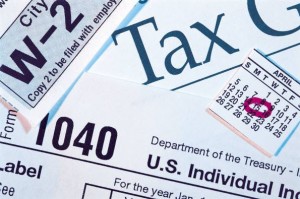In 1789 Benjamin Franklin wrote a letter to Jean-Baptiste Leroy stating, “Our new Constitution is now established, and has an appearance that promises permanency; but in this world nothing can be said to be certain, except death and taxes.”
Having seen so much death in fighting the English for the freedoms established in the Constitution and the amount of money needed to fund those battles and wars, Benjamin Franklin spoke honestly and truthfully. Those truths still hold true today.
Though the IRS is trying to get every penny they can to pay the debts they have incurred, they do make mistakes. In Part 1 of How to Dispute an IRS Notice, I explained how we received our notice and the 7 steps taken to prepare the presentation of our case.
In Part 2, I will share how I contacted the IRS and the results of that communication including what I would have done had the issue not been resolved to my satisfaction.
Part 2: Presenting your Case
Yes, I was a bit nervous prior to making contact, but saving my family $1500 was all the motivation I needed to get the ball rolling.
1. Choose a Contact Method
The notice I received indicated assistance via the Internet or phone. I chose to call and used the phone number in the contact section rather than the phone numbers listed in the additional information sections.
2. Select a Quiet Time
Needing time without interruption, I waited until nap time to make the call.
3. Review your Case
Prior to calling, I went through my documents and read through my proof to be sure I had everything needed.
4. Make Contact
I made the call and was transferred to a representative. After identifying myself, I asked to discuss the notice received. Then I let the representative explain the notice.
5. Listen
For me, I did not need to present my case immediately. I allowed the representative to explain the issue which did two things:
- Allowed the representative to get familiar with my situation, and
- Confirmed the problem issue
In our instance, the problem was the paperwork. The IRS claimed they did not receive the forms showing the deferred tax from our Traditional IRA to a Roth IRA conversion.
6. Offer your Proof
When the representative finished explaining, she began asking questions. At that time, I calmly read to her my proof in that I had a confirmation that all the pages of our tax return were filed electronically. I had a copy of the forms and the date the transmission occurred.
7. Wait for a Response
After noting the proof, I stopped. The representative then accessed our return and “found” the correct forms. She then confirmed that those forms were correct which resolved the tax issue in question and that our inquiry was now closed.
8. Request a Written Response
To confirm that information, I requested a resolution in writing which the representative sent. I took the response and added it to the tax notice and other documentation used to solve the issue. These documents were stapled together and added to our tax records file opening.
Additional Option
In our situation, I chose to address the issue directly with the IRS. The process was quick and easy which saved our family money, energy, and time. However, had the issue not been quickly resolved or if I had felt uncertain about the situation, I would have contacted TaxAct.
When we filed our taxes electronically through TaxAct, we gained FREE tax help and audit support. Any notification from the IRS regarding our filed tax return during the year or years we file with TaxAct, we get FREE help and support.
I could have contacted TaxAct and asked them to help me with the IRS process. If they had advised me to call the IRS, I would have requested a conference call with TaxAct, the IRS, and myself.
Using an electronic filing service has its advantages which I will not hesitate to use should we need them. Also, if you have someone prepare your taxes, you should be able to take any IRS notices to your accountant to handle the issues. Be aware as you might incur an additional fee for their services.
Though the day we received an IRS notice was not our lucky day, we addressed the issue quickly and completely. I was not impressed with the representative as she could not say why we received the bill when the documents were in our file. Of course, it does not hurt the IRS to send out a letter.
If the citizen does not want to press it, then they just pay even though they do not owe it. In this way, the government gets more money. However, citizens can prove their case and keep those hard-earned dollars in their savings.
Having been through this process resulting in a win for us, I will not panic the next time I get an IRS notice. I will address it quickly as penalties will accrue if the deadline is not met.
With the certainty of death and taxes, try to relax should you receive an IRS notice. It is not the end of the world. Consider your options, make your case, and let the IRS resolve your dispute. Keep your emotions in check while you work it out.
This process would not fall into the category of fun, but it was positive and resulted in a huge sigh of relief. I was thrilled to have this matter solved within 24 hours of receiving the notice.
Stay on top of these items as they will weigh you down. Keep on plugging along in your document organization. We are at the end of our important documents file box 3, so it is time to do some celebrating. Hip Hip Hooray!
Question: Have you disputed an IRS notice?
